Related Research Articles
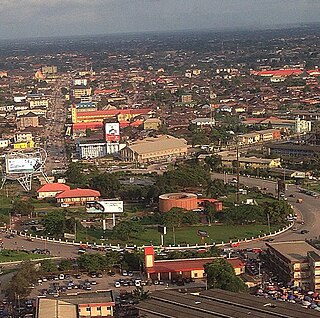
Benin City is the capital and largest city of Edo State, Nigeria. It is the fourth-largest city in Nigeria according to the 2006 census, after Lagos, Kano, and Ibadan, with a population estimate of about 3,500,000 as of 2022. It is situated approximately 40 kilometres (25 mi) north of the Benin River and 320 kilometres (200 mi) by road east of Lagos. Benin City is the centre of Nigeria's rubber industry, and oil production is also a significant industry.
The Benin Expedition of 1897 was a punitive expedition by a British force of 1,200 men under Sir Harry Rawson in response to the ambush of a previous British party under Acting Consul General James Phillips, of the Niger Coast Protectorate. Rawson's troops captured and sacked Benin City, bringing to an end the Kingdom of Benin, which was eventually absorbed into colonial Nigeria.

Lagos State is a state in southwestern Nigeria. Of the 36 states, it is both the most populous and smallest in area. Bounded to the south by the Bight of Benin and to the west by the international border with Benin Republic, Lagos State borders Ogun State to the east and north making it the only Nigerian state to border only one other state. Named for the city of Lagos—the most populous city in Africa—the state was formed from the Western Region and the former Federal Capital Territory on 27 May 1967.

Idia was the mother of Esigie, the Oba of Benin who ruled from 1504 to 1550. She played a significant role in the rise and reign of her son, being described as a great warrior who fought relentlessly before and during her son's reign as the Oba (king) of the Edo people. Queen Idia was instrumental in securing the title of Oba for her son Esigie following the death of his father Oba Ozolua. To that end, she raised an army to fight off his brother Arhuaran who was supposed to be the Oba by right and tradition but was subsequently defeated in battle. Esigie’s mother became the 17th Oba of Benin.
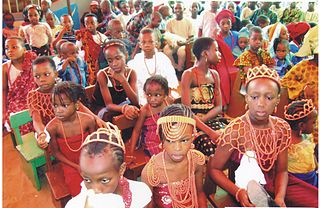
The Edo or Benin people are an Edoid ethnic group primarily found in Edo State, Southern part of Nigeria. They speak the Edo language and are the descendants of the founders of the Benin Empire. They are closely related to other ethnic groups that speak Edoid languages, such as the Esan, the Afemai, the Isoko, and the Urhobo.
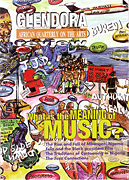
Glendora Review is a Nigerian magazine that publishes work relating to art, literature, and culture.

The World Festival of Black Arts, also known as FESMAN, is a month-long culture and arts festival that takes place in Africa. The festival features poetry, sculpture, painting, music, cinema, theatre, fashion, architecture, design and dance from artists and performers from around the African Diaspora.
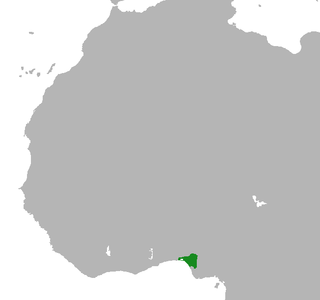
The Kingdom of Benin, also known as the Edo Kingdom, or the Benin Empire was a kingdom within what is now southwestern Nigeria. It has no historical relation to the modern republic of Benin, which was known as Dahomey from the 17th century until 1975. The Kingdom of Benin's capital was Edo, now known as Benin City in Edo State, Nigeria. The Benin Kingdom was "one of the oldest and most developed states in the coastal hinterland of West Africa". It grew out of the previous Edo Kingdom of Igodomigodo around the 11th century AD, and lasted until it was annexed by the British Empire in 1897.
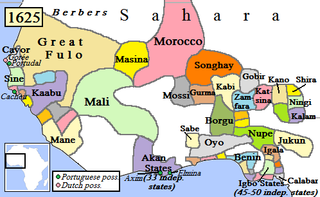
Nigerian traditional rulers often derive their titles from the rulers of independent states or communities that existed before the formation of modern Nigeria. Although they do not have formal political power, in many cases they continue to command respect from their people and have considerable influence.
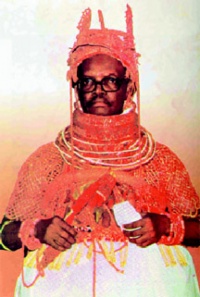
Erediauwa was the 39th Oba of Benin, traditional ruler of the Edo people in Benin City, Edo State, Nigeria. Formerly known as Prince Solomon Akenzua, Oba Erediauwa's full title was His Royal Majesty Omo n'Oba n'Edo Uku Akpolokpolo Erediauwa I. He was succeeded by Ewuare II.

Ọmọ n'Ọba n'Ẹdo Uku Akpọlọkpọlọ, Akenzua II was the Oba of Benin from 1933 until his death in 1978.
Johnson Donatus Aihumekeokhai Ojeikere, known as J.D. 'Okhai Ojeikere, was a Nigerian photographer known for his work with unique hairstyles found in Nigeria.
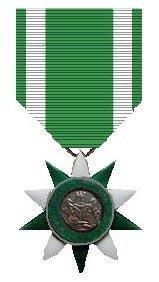
The Order of the Federal Republic (OFR) is one of two orders of merit, established by the Federal Republic of Nigeria in 1963. It is senior to the Order of the Niger.

Festac '77, also known as the Second World Black and African Festival of Arts and Culture, was a major international festival held in Lagos, Nigeria, from 15 January 1977 to 12 February 1977. The month-long event celebrated African culture and showcased to the world African music, fine art, literature, drama, dance and religion. About 16,000 participants, representing 56 African nations and countries of the African Diaspora, performed at the event. Artists who performed at the festival included Stevie Wonder from United States, Gilberto Gil from Brazil, Bembeya Jazz National from Guinea, Mighty Sparrow from Trinidad and Tobago, Les Ballets Africains, South African Miriam Makeba, and Franco Luambo Makiadi. At the time it was held, it was the largest pan-African gathering to ever take place.

The Benin ivory mask is a miniature sculptural portrait in ivory of Idia, the first Iyoba of the 16th century Benin Empire, taking the form of a traditional African mask. The masks were looted by the British from the palace of the Oba of Benin in the Benin Expedition of 1897.

The Ofala Festival is an annual ceremony practiced by Igbo people, particularly the indigenes of Onitsha, Umueri, Umuoji and other neighboring communities such as Aguleri, Nnewi and Ukpo in Dunukofia Local Government Area. It serves as a rites of renewal of the king or Igwe or Obi and it is similar to the Igue festival in Benin and the Ine, Osi or Ogbanigbe Festival in many mid-West Igbo communities of Nigeria. The term ofala, is derived from two Igbo words - ọfọ and ala. The festival is celebrated within two days mostly in October by the Obi and is a customary obligation that must be performed every couple of years without fail.
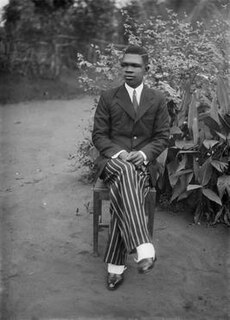
Chief Solomon Osagie Alonge (1911–1994) was a self-taught photographer and pioneer of Nigerian photography. He was the first official photographer for the royal court of Benin City, Nigeria, and a chief in the Iwebo palace society. Alonge's record of Nigerian royalty and social class is one of the most extensive and well-preserved collections from the period.
Idahosa "Hosa" Wells Okunbo was a Nigerian business magnate, investor, philanthropist, and trained commercial pilot. He served as chairman and director on numerous company boards in Nigeria, spanning multiple business sectors such as the agro-allied, petroleum, telecommunications, power, real estate, and banking industries.
Ewuare II was crowned the Oba of Benin on 20 October 2016. He is the 40th Oba, a title created for the Head of State (Emperor) of the Benin Empire at some time between 1180 and 1300.
References
- ↑ Oliver Enwonwu and Oyindamola Olaniyan, "Leading Photographers Based in Nigeria (Part One)", Omenka , 4 February 2017.
- 1 2 3 "Tam Fiofiri- The Speed of Thought", The Pan African Space Station (PASS).
- ↑ Adie Vanessa Offiong, "Tam Fiofori: Telling Nigeria’s story in pictures", Daily Trust , 2 October 2010.
- 1 2 3 4 Uzor Maxim Uzoat, "The abiding relevance of Erediauwa", The Guardian (Nigeria), 5 June 2016.
- ↑ Jimoh, Michael (15 May 2022). "Meeting Tam Fiofori". The Will. Retrieved 24 November 2022.
- ↑ Thom Holmes, "Sun Ra & the Minimoog", Bob Moog Foundation, 6 November 2013.
- ↑ Tam Fiofori, "Sun Ra: Myth, Music & Media", Glendora Review, African Quarterly on the Arts, vol. 3, No. 3 and 4.
- ↑ "Sun Ra: Myth, Music & Media", Review, African Quarterly on the Arts, vol. 3, No. 3 and 4, cited in Thom Holmes, "Electronic Jazz--The Early History (Part 5): Sun Ra and Early Synthesizer Jazz (1969-70)", Noise and Notations, 9 December 2012.
- ↑ International Times Archive 1969.
- ↑ Michael Fitzgerald, "A Bibliography of Change Magazine", Current Research in Jazz 1, (2009).
- 1 2 "Shèkèrè Columnists | Quintessence by Tam Fiofori", Shèkèrè.
- ↑ Jason Pitzl-Waters, "The 'New Religion’s' Crusade Against Art", The Wild Hunt, 22 November 2009.
- 1 2 "Holloway, Shehu, Arulogun, Fiofori for Honours at Film Fest", The Nigerian Voice, 20 January 2011.
- ↑ Lindsay Barrett, "A historic legacy in pictures". The Guardian (Nigeria), 7 March 2018.
- ↑ Chronicles of PAWA Activities (1989 -2013), October 1992, PAWA.
- ↑ "Holloway, Shehu, Arulogun, Fiofori for Honours at Film Fest", NigeriaFilms.com.
- ↑ Ed Keazor, "Music In Africa celebrates Nigerian Music anniversary at Social Media Week", Music In Africa, 30 January 2015.
- ↑ DatboyJerry, "#LCA2016: Lights Camera Africa Film Festival List – Synopses & Trailers", 360NoBS, 26 September 2016.
- ↑ Lauren Said-Moorhouse, "'A love letter to Nigeria': The master photographer who captured nation's life", African Voices, CNN, 13 October 2014.
- ↑ "Film Screening: J.D Ojeikere, The Master Photographer", African Artists' Foundation, March 2016.
- ↑ "Olu Amoda: A Metallic Journey", Lights Camera Africa!!!.
- ↑ Amarachukwu Iwuala, "#Nollywood Movie Review Of ‘Olu Amoda: The Modern-Day Archaeologist’", 360NoBS, 28 April 2015.
- ↑ "Tam Fiofori images exhibited in Benin Palace", nigeriang.com, 28 April 2010.